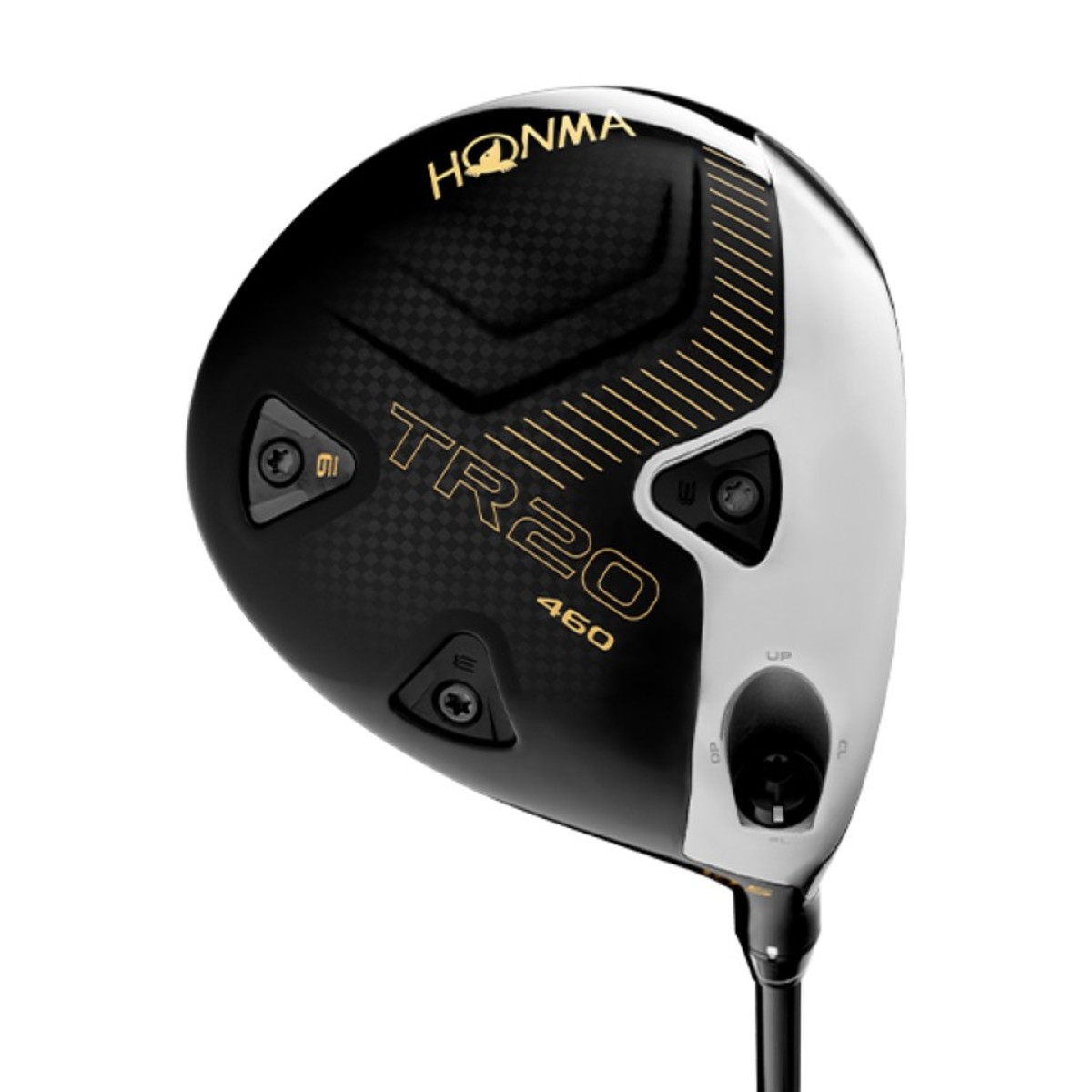Honma brings its new driver to you

From a milk crate filled with nondescript golf balls in varying states of form, I grab a grungy Strata that looks like it could have been made when I was still in high school and tee it up on the far right side of the narrow driving range at a semi-private golf club in southeastern Massachusetts.
Using a decrepit ball that has possibly cycled through two decades of use on the range feels out of place only because I’m just a couple of swings into a personalized fitting for the Honma TR20 driver. That such an antiquated piece of golf equipment is playing a role in a modern-day club fitting feels like a plot point in a Back to the Future spinoff about golf. I’m tempted to exclaim “This is heavy!” in my best Marty McFly impression, except that the TR20 in my hands is far from it. In fact, the club’s remarkably lightweight construction reflects the brand’s commitment to cutting-edge composite materials and purpose-driven design.
Honma can now offer club fittings at neutral outdoor sites thanks to the brand’s new mobile experience, an initiative that increased Honma’s exposure across more than a dozen North American regions this summer.

When I tee the ball up, I make sure to align it with the sensors of a portable Foresight GC Quad launch monitor positioned not far from the crate of golf balls. Anthony Fargone, Honma’s master fitter for New England at the time of my session, assures me that the club and ball data captured by the launch monitor at the point of impact — ball speed, launch angle, total spin, and carry distance — is what’s important in the effectiveness of this fitting. (Corey Brigham, Honma’s master fitter for the northeast, has since taken over for Fargone.)
“That’s pretty good right there,” Fargone had said at the start of this session after seeing me hit one of my better drives with the current big dog in my bag, a TaylorMade M3 with a stiff 53-gram Veylix Alpina shaft.
“I really like all of those numbers,” he added, checking the GC Quad. “The only thing we might be able to do to get you a little more optimum is to knock that spin number down a hundred or two hundred RPMs.”
After handing me Honma’s new TR20 460cc driver with a 65-gram Ventus Blue stiff shaft, Fargone steps back to assess my swing and the resulting shots. It takes only one swing to feel the differences between Honma’s latest driver and my two-year-old M3. Most notably, there’s a smoothness and a softness to the TR20 at impact that is intensely gratifying. Such gratification repeats itself once I catch sight of the high-launching and far-flying shot that I’ve hit.
There’s a lightness to the TR20 that conveys the potential for long drives, even before a ball is struck and that soft impact is felt. That lightness, not surprisingly, is no accident. According to Honma, the TR20’s clubhead currently features the largest amount of carbon fiber of any driver on the market. In fact, the driver is defined by a carbon crown and a carbon sole that are built around a high COR (coefficient of restitution) titanium frame, which dampens vibration. Although hidden from view, the underside of the driver’s crown is ribbed, which further reduces weight and also adds strength.
It’s long been understood that sole weight in a driver is a good thing. So why did Honma commit to constructing the sole of its new driver with a notoriously lightweight material? Mark Myrhum, Honma’s director of global products, points to the club’s minimalistic sole design — specifically the three adjustable weight ports (positioned in a triangular configuration with one near the face, one at the back, and one near the heel) as proof. Simply put, those adjustable weights provide all the ballast that is necessary. “We’ve used weight only in the purpose locations,” Myrhum said.

In fact, by eliminating any unnecessary weight in or near the toe of the club, Honma has crafted a driver that promotes faster swing speeds. “We took weight out of the toe, which helps face closure,” Myrhum said. “The faster the face closure, the faster the speed [of the swing].”
Because many of today’s drivers are equipped with sliding weight tracks that allow for precise personalization and adjustment, the TR20’s lack of one — replaced with the aforementioned trio of independent and stationary weight ports — gives the driver an almost throwback appearance. However, aesthetics did not dictate the use of those stationary weight ports.
According to Myrhum, 80 percent of golfers who use a driver with a sliding weight track set the location of the weights when they first acquire the club (or are fit for it) and never move them. Those sliding tracks, in Myrhum’s opinion, are just a club-fitting tool, yet they add discretionary weight that stands in the way of optimizing a club’s performance.
For many golfers, the value of Honma’s new driver, which starts at $600, can be linked to the Japanese company’s proprietary shafts as much as it can to the design of the model’s revolutionary clubhead. Crafted to tight tolerances and using advanced Toray composite materials, Honma’s Vizard shafts deliver uniform stiffness in all directions, which minimizes the presence of a spine. That said, each shaft is built with its spine set at 6 p.m. (along the backside of the shaft, opposite the target that a golfer is aiming at). This allows the shaft to react consistently and predictably during every swing. What’s more, Honma’s non-rotating hosel technology allows players to adjust the lie angle, as well as to open or close the club face without altering the orientation of the shaft’s spine.
Proof of such value is evident following the conclusion of my mobile fitting. Despite the encouraging first shot that I hit with the Ventus shaft, it was a 65.5-gram Vizard FD-6x shaft that dialed in the consistency of my center-face strikes. In doing so, the shaft tightened my dispersion and increased the frequency of my longest drives.
Three weeks later, I found myself on the course playing my first round of golf with that new TR20 in my hands. By the time I reached the 18th tee box, I had pulled that driver from my bag only three times, hitting good drives that got progressively better with each swing. The final hole — a 572-yard par 5 that almost always requires three shots to reach the green — will need the best swing that I can produce.
With a Pro-V1 teed up, I took a smooth swing and hit as pure a drive as I ever have. The shot split the fairway and, when my ball came to rest, the drive’s total distance had brought the hole’s green within reach for my second shot. It’s a drive that not only validates Honma’s technology and design, it also legitimizes the effectiveness of a mobile fitting experience — even one that might be conducted using only haggard golf balls.
Sign up to receive the Morning Read newsletter, along with Where To Golf Next and The Equipment Insider.
